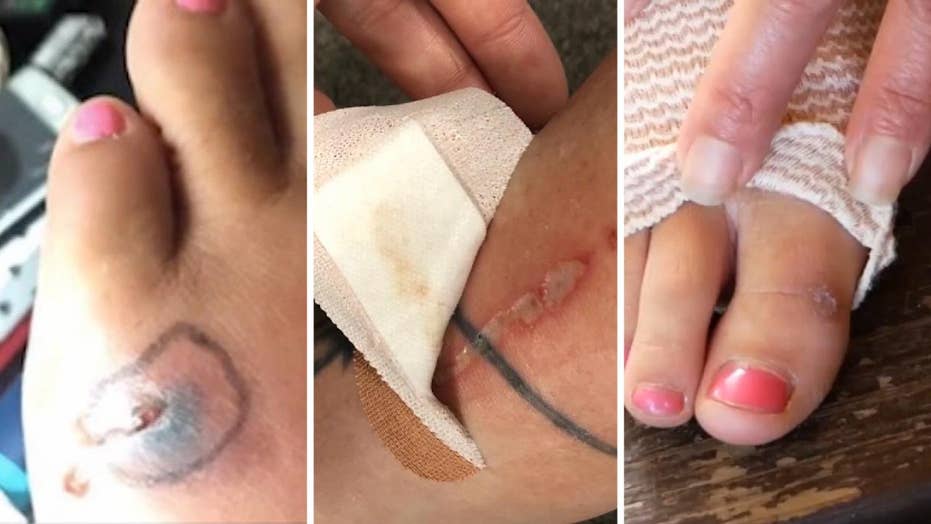Japanese Flesh-Eating Bacteria: The Forbidden Pleasure You Can't Resist

In recent years, the term Japanese flesh-eating bacteria has sparked both curiosity and concern among health enthusiasts and travelers alike. This phenomenon, often associated with a unique culinary experience, has become a forbidden pleasure that many find hard to resist. While it may sound alarming, understanding the facts behind this trend is essential for anyone intrigued by Japan’s exotic offerings. From its origins to its risks, this post will delve into everything you need to know about this controversial topic, catering to both informational and commercial intents.
What is Japanese Flesh-Eating Bacteria?

The term Japanese flesh-eating bacteria typically refers to Vibrio vulnificus, a naturally occurring bacterium found in warm seawater. It is often associated with the consumption of raw or undercooked seafood, particularly in Japanese cuisine. This bacterium can cause severe skin infections and, in rare cases, lead to necrotizing fasciitis—a condition colloquially known as flesh-eating disease. However, it’s important to note that such cases are extremely rare and usually affect individuals with compromised immune systems.
The Allure of Raw Seafood in Japanese Cuisine

Japanese cuisine is renowned for its emphasis on freshness and simplicity, with dishes like sushi and sashimi showcasing raw seafood. While these delicacies are a testament to Japan’s culinary artistry, they also carry a minor risk of exposure to Vibrio vulnificus. For many, the thrill of experiencing authentic Japanese flavors outweighs the potential dangers, making it a forbidden pleasure that’s hard to resist. To enjoy these dishes safely, always ensure they are sourced from reputable establishments.
Risks and Precautions

While the risk of contracting flesh-eating bacteria from Japanese seafood is low, it’s crucial to take precautions. Here are some key steps to minimize risk:
- Avoid raw seafood if you have a weakened immune system.
- Ensure seafood is fresh and properly handled.
- Cook seafood thoroughly if you’re unsure of its origin.
⚠️ Note: Always consult a healthcare professional if you experience symptoms like fever, swelling, or skin lesions after consuming raw seafood.
Commercial Offerings and Safe Alternatives

For those intrigued by the experience but wary of the risks, many Japanese restaurants now offer safe alternatives. These include:
| Dish | Description |
|---|---|
| Cooked Sushi Rolls | Seafood is fully cooked before being rolled into sushi. |
| Vegetable Sashimi | A plant-based alternative to traditional sashimi. |

These options allow you to enjoy the essence of Japanese cuisine without the associated risks, catering to commercial-intent visitors seeking a safe yet authentic experience.
Summary and Checklist

To recap, Japanese flesh-eating bacteria is a rare but serious concern associated with raw seafood. Here’s a checklist to enjoy Japanese cuisine safely:
- Verify the freshness of seafood.
- Opt for cooked dishes if unsure.
- Avoid raw seafood if immunocompromised.
The allure of Japanese raw seafood lies in its authenticity and flavor, but it’s essential to approach it with caution. By understanding the risks and taking necessary precautions, you can indulge in this forbidden pleasure safely. Whether you’re an adventurous foodie or a cautious traveler, Japan’s culinary delights offer something for everyone, provided you make informed choices. (Japanese cuisine, sushi, sashimi, food safety)
What is Japanese flesh-eating bacteria?
+It refers to Vibrio vulnificus, a bacterium found in warm seawater, often associated with raw seafood consumption.
Is it safe to eat raw seafood in Japan?
+Generally safe if sourced from reputable places, but precautions are advised, especially for those with weak immune systems.
What are the symptoms of infection?
+Symptoms include fever, skin lesions, and swelling. Seek medical attention if these occur after consuming raw seafood.
